Head of Antonia Minor
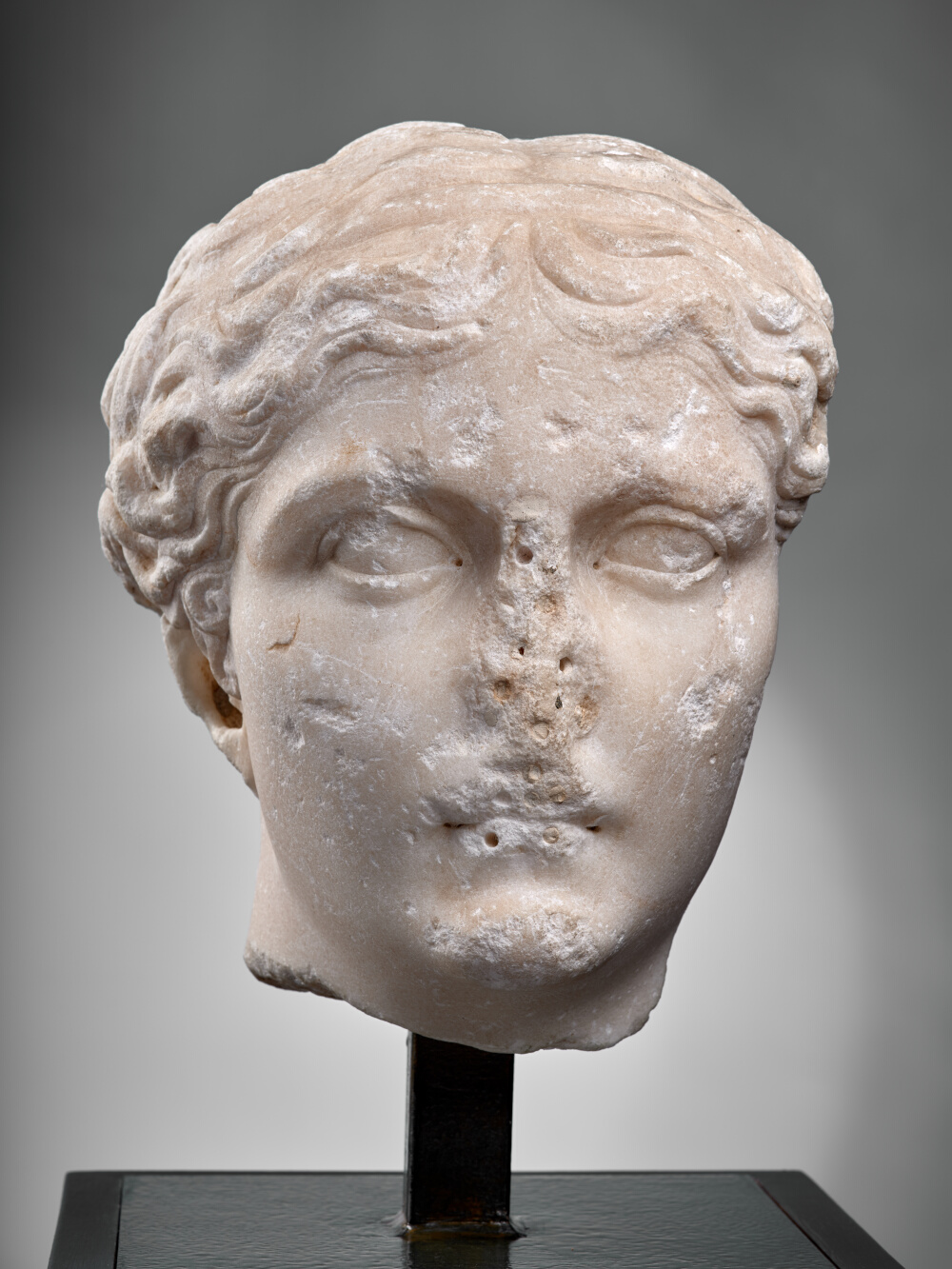
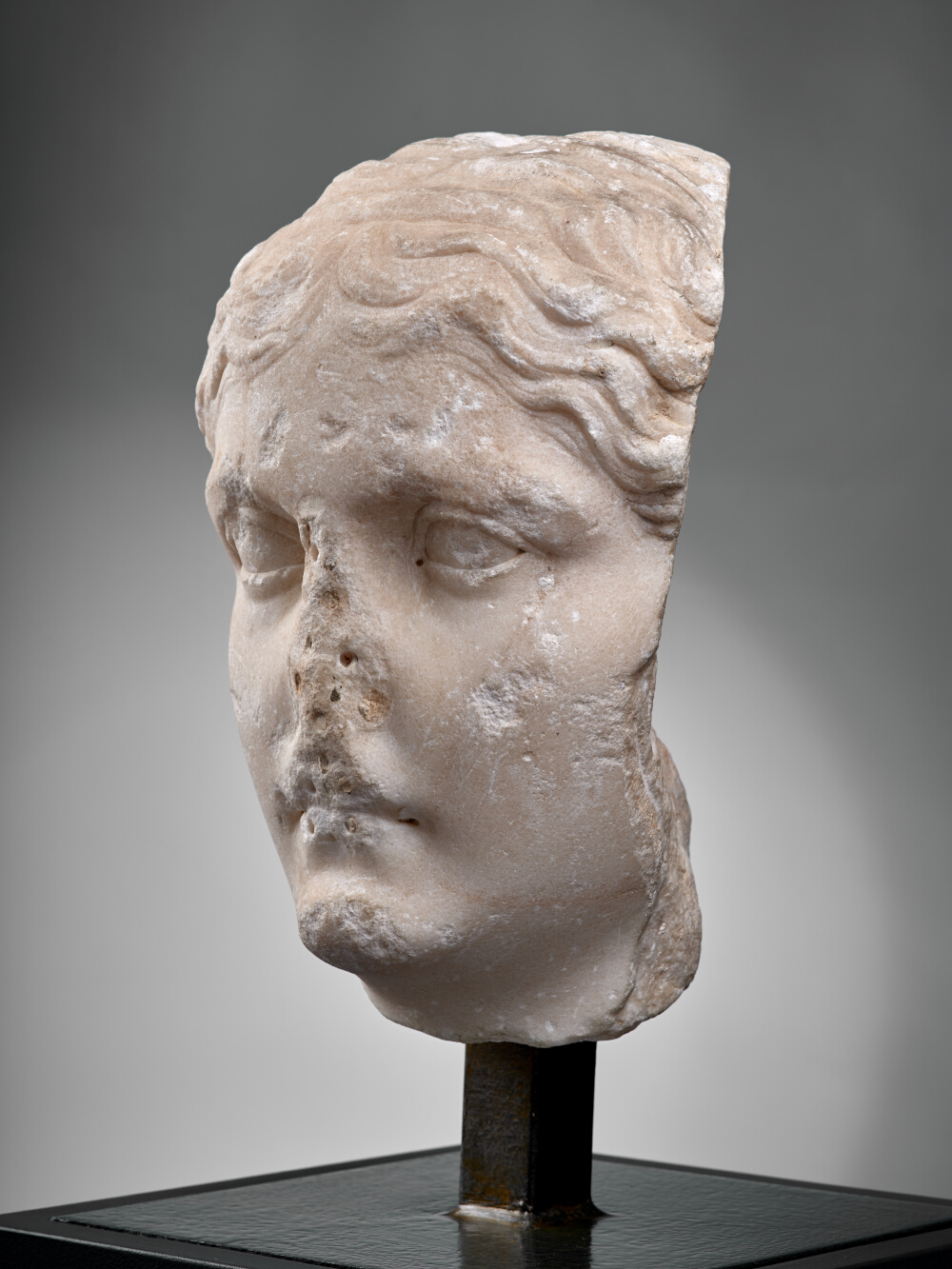
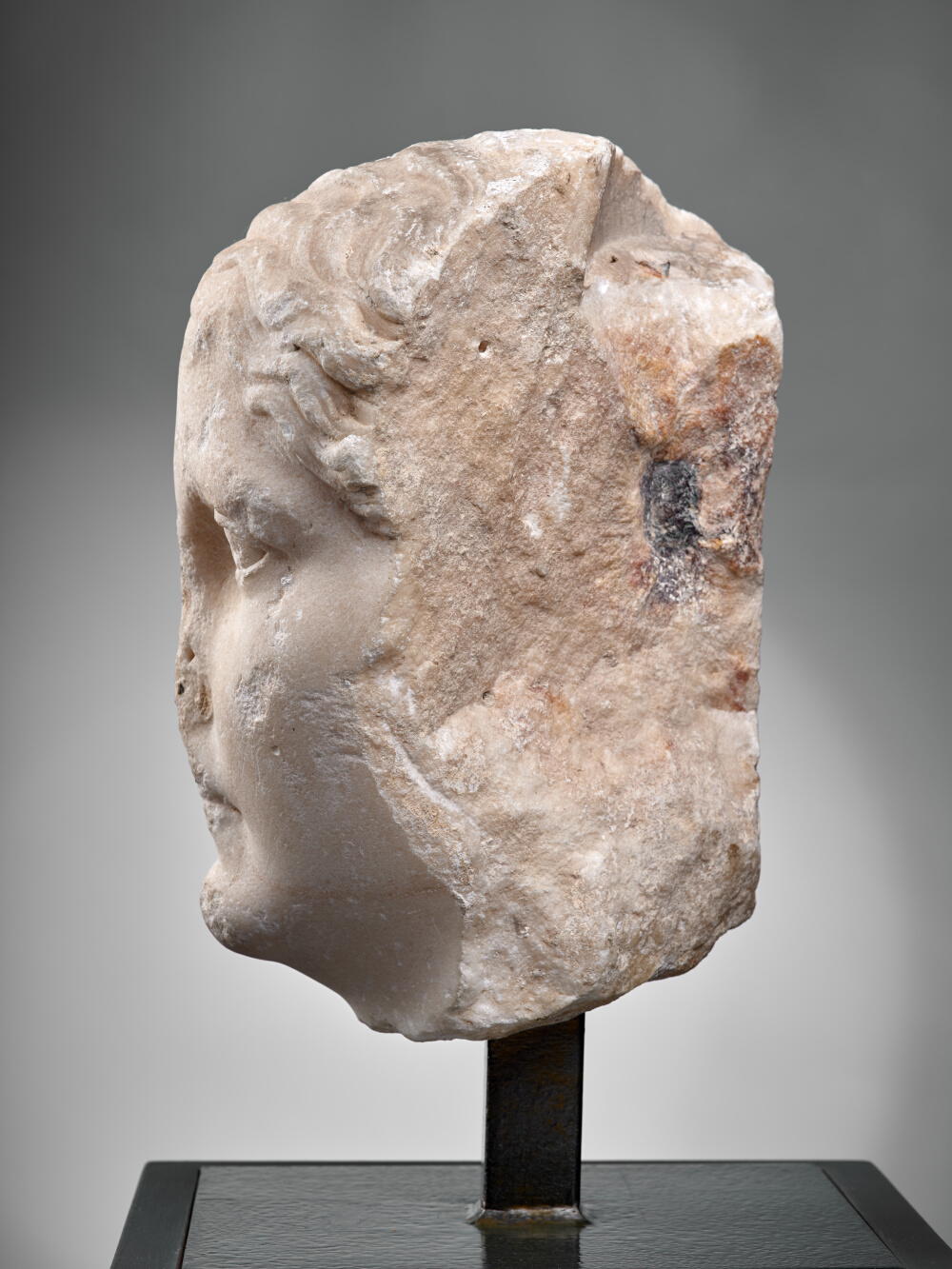
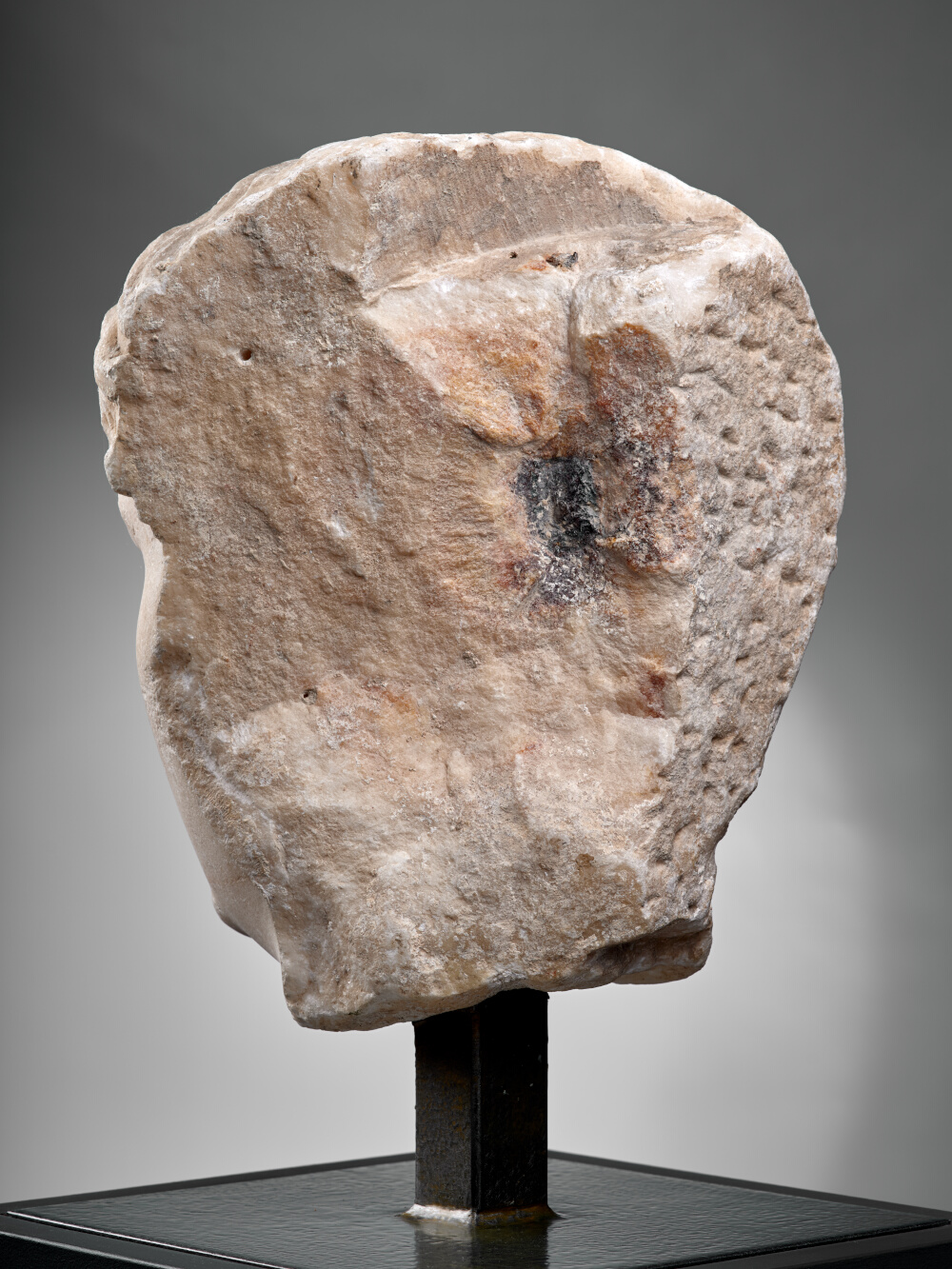
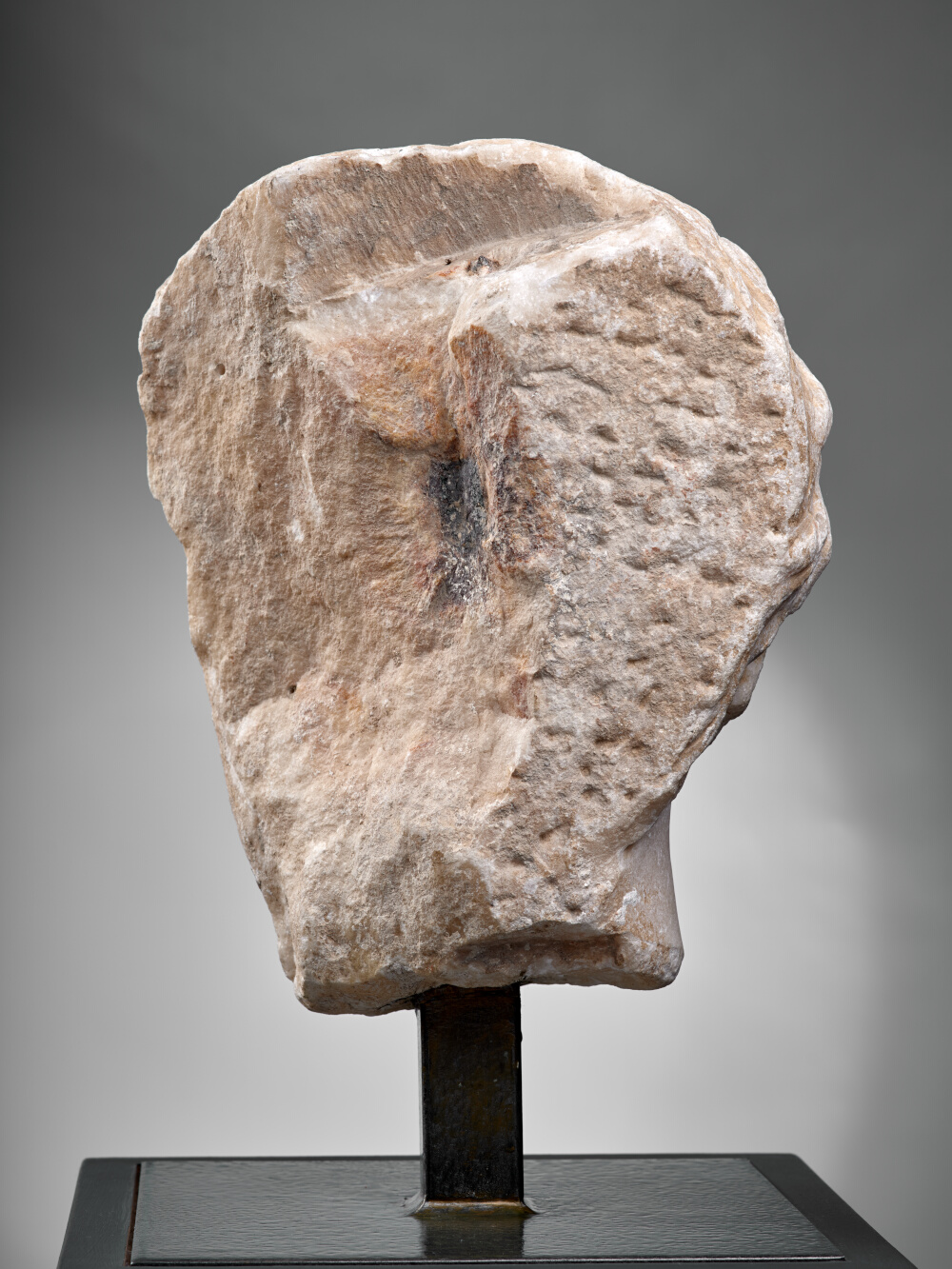
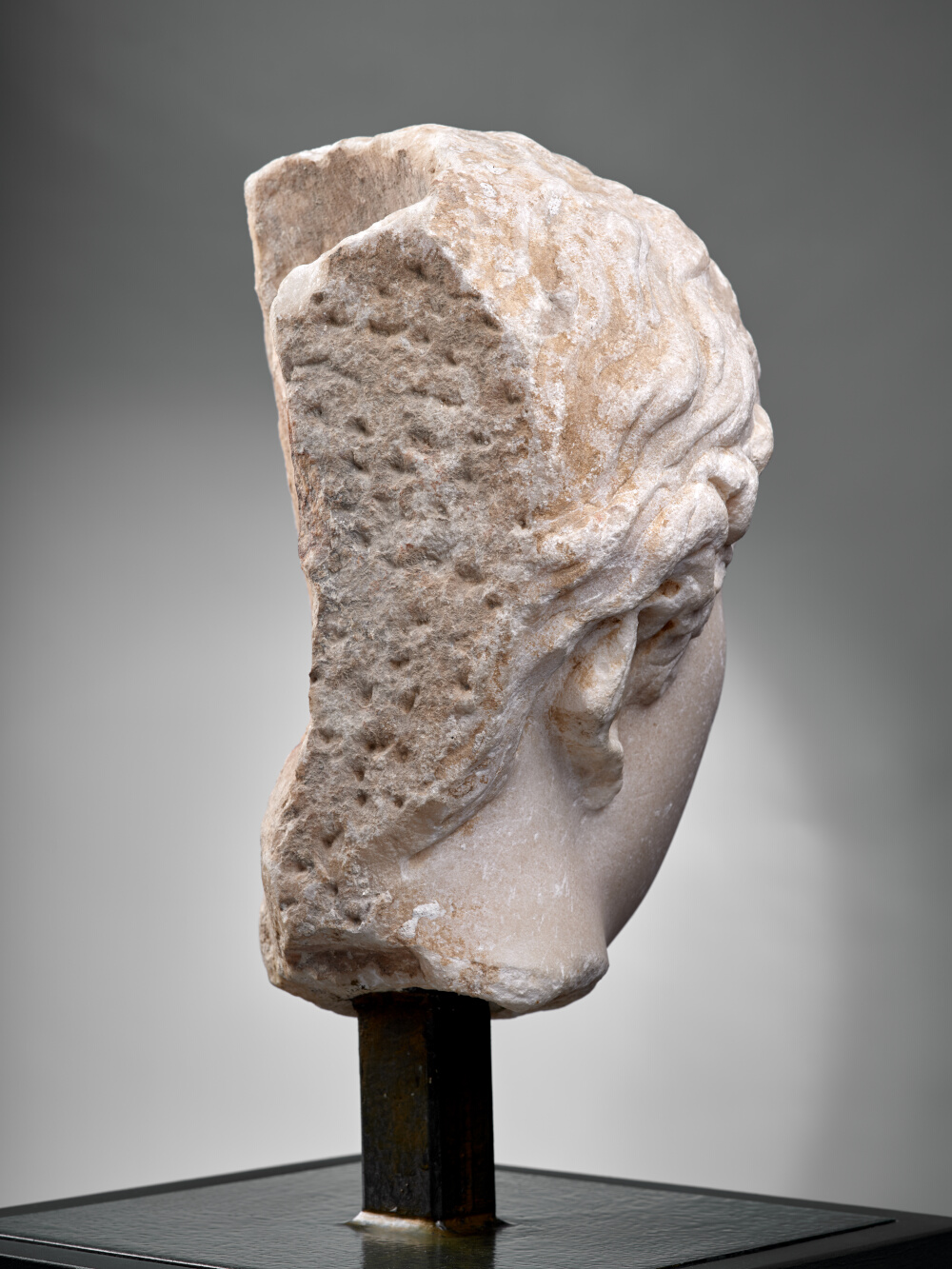
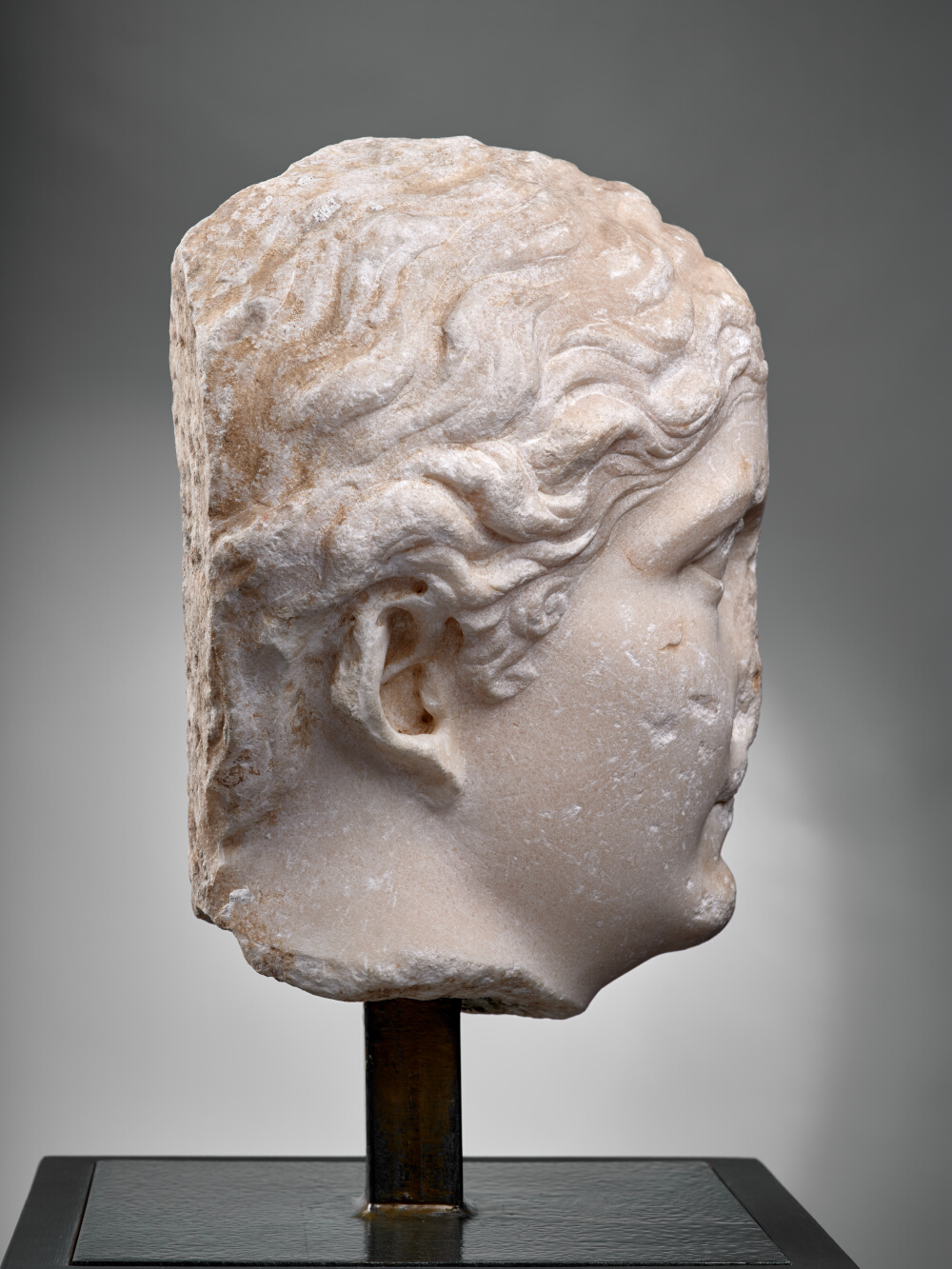
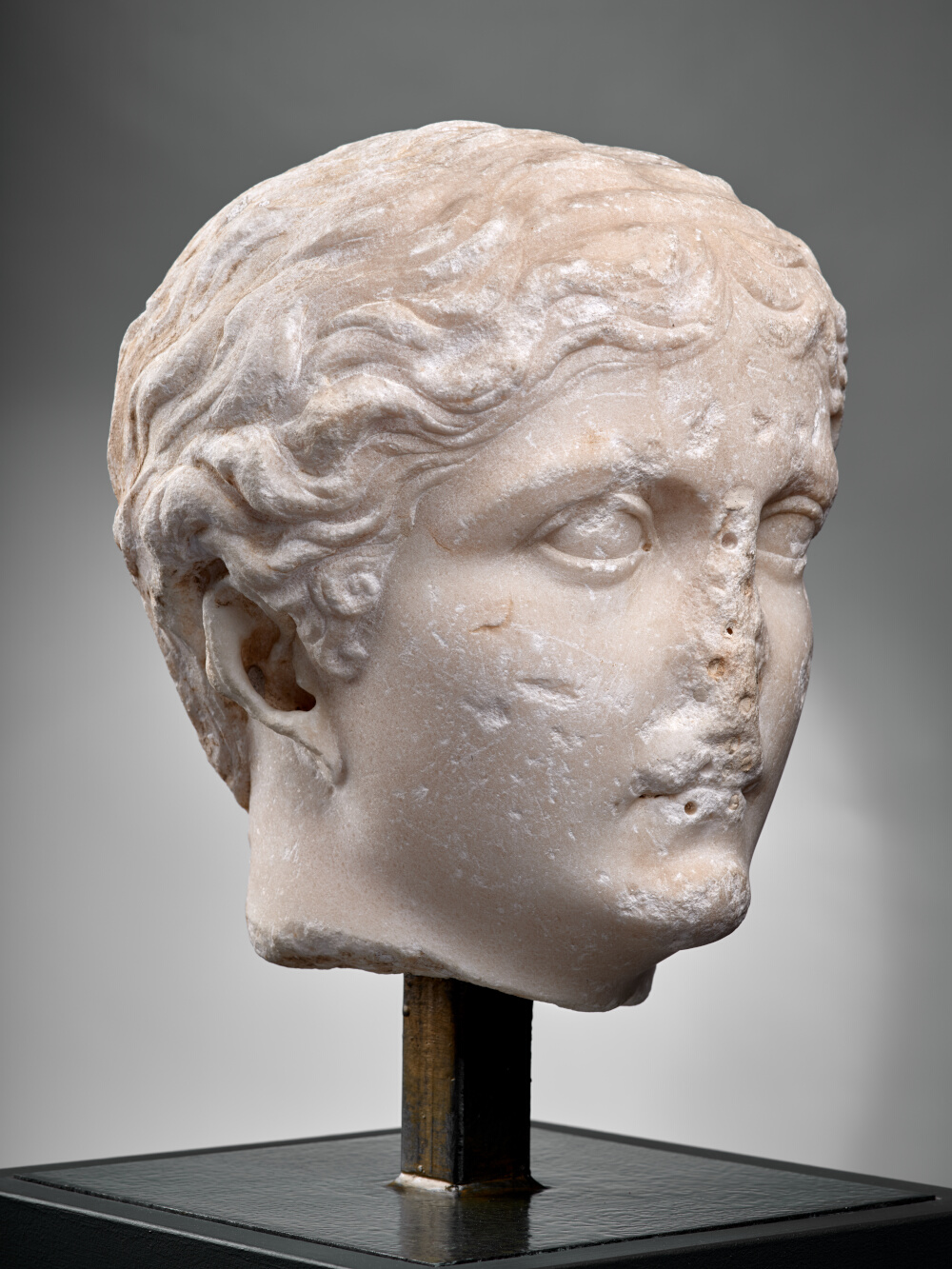
- Biographic data
- 36 BC – AD 37
Daughter of Mark Antony and Octavia Minor (sister of Augustus), spouse of Drusus the Elder (brother of Tiberius), mother of Germanicus and Claudius, Emperor of Rome - Date de création
- Between AD 37 and 54
- Type
- Known as "of the Schläfenlöckchen type" (with sidelocks)
- Material
- Lychnites marble (island of Paros)
- Dimensions
- H. 27 x l. 21,2 x P. 21 (cm)
- Inventory number
- Ra 31
- Photo credits
- Daniel Martin
This head, which is believed to be that of Antonia Minor, was probably added to the collection in Toulouse during the first half of the 19th century. It was completed and mounted on a specially-designed stucco bust. There are no documents to prove that this head was actually found in Chiragan.
As the niece of Augustus and the mother of Germanicus, a much-loved prince, Antonia was bound to enjoy a glowing reputation. The portrait of this princess, who was famed for her beauty, was widely distributed throughout the Empire, from 16 or 15 BC up until after her death, during the reign of Claudius (AD 41-54). She was to take over as the priestess at the head of the cult for the deified Augustus, thus succeeding Empress Livia, who died in the year AD 29. As sister-in-law to Tiberius, Antonia had informed the latter of the plot against him fomented by Sejanus, the prefect of the Praetorian Guard, in the autumn of 31. The emperor therefore showed his gratitude by erecting sculptures and associated dedications. But it was during the reign of her son Claudius that she was paid the greatest number of tributes, testifying to her key role within the imperial house. Antonia was therefore the most honoured princess in Gaul, as evidenced by the series of portraits and dedications discovered in Nîmes, Cimiez, Béziers, Chiragan and Vienne. In the latter, a colossus of the princess, probably posthumous, wearing a diadem, was unearthed in the theatre.
The head in Toulouse, which is unfortunately very damaged, was carved from oriental Greek marble, probably in a workshop in Rome. It shows Antonia’s usual simple hairstyle, coiffed in waves on either side of a centre parting, which is characteristic of ideal Greek figures, a style that became widespread in the art of portraiture, especially from the beginning of the reign of Augustus. But here the hair is held in place by a plain headband that seems to be twisted: perhaps intended as a simple ornament or as a symbol of the status of the priestess of the cult of the deified Augustus, as endorsed by Antonia, according to Emmanuelle Rosso E. Rosso, L’image de l’empereur en Gaule romaine : portraits et inscriptions (Archéologie et histoire de l’art), Paris, 2006, pp. ocator 446.. Finally, wavy strands of hair had been glued to the back of the head, and held in place by a bow. This type of add-on was common in Hellenistic sculpture during the last centuries BC.
All these characteristics (wavy and slightly loose strands of hair, the centre parting and bow), which were not only visible in provincial dynastic groups but also disseminated through the coins minted with the image of Antonia, resulted in a genuine fashion among women during the reign of Tiberius. Drusus’s wife was indeed seen as a model of wisdom and virtue, echoed in this understated hairstyle, which was preferred to the hairstyles that relied on complex braids and locks of hair that covered the forehead, all of which had been popular during the reign of Augustus.
According to J.-C. Balty 2005, Les portraits romains, 1 : Époque julio-claudienne, 1.1 (Sculptures antiques de Chiragan (Martres-Tolosane), Toulouse, p. 145-161.
Bibliography
- Balty, Cazes 1995 J.-C. Balty, D. Cazes, Portraits impériaux de Béziers : le groupe statuaire du forum, Toulouse. p. 107, no 104
- Balty, Cazes 2005 J.-C. Balty, D. Cazes, Les portraits romains, 1 : Époque julio-claudienne, 1.1 (Sculptures antiques de Chiragan (Martres-Tolosane), Toulouse. p. 51-52, fig. 24-25, p. 147-160, fig. p. 146-149, 151 (no 77), 152 (no 79), 153 (no 81), 156 (no 83), 161
- Boschung 2002 D. Boschung, Gens Augusta : Untersuchungen zu Aufstellung, Wirkung und Bedeutung der Statuengruppen des julisch-claudischen Kaiserhauses (Monumenta artis romanae), Mainz. p. 129, 131, no 45.3, pl. 95.3-4
- Du Mège 1835 A. Du Mège, Description du musée des Antiques de Toulouse, Toulouse. p. 84, no 158
- Du Mège 1828 A. Du Mège, Notice des monumens antiques et des objets de sculpture moderne conservés dans le musée de Toulouse, Toulouse. p. 36, no 71
- Fittschen 1977 K. Fittschen, Katalog der Antiken Skulpturen in Schloss Erbach (Archäologische Forschungen-Deutsches archäologisches Institut), Berlin. p. 61, no 7, no 4 (à propos du no 19)
- Joulin 1901 L. Joulin, Les établissements gallo-romains de la plaine de Martres-Tolosane, Paris. p. 93, no 73
- Künzl 1997 S. Künzl, « Antonia Minor, Porträts und Porträttypen, » Jahrbuch des Römisch-Germanischen Zentralmuseums Mainz, 44, 2, pp. 441–495. p. 459, cat. B8, p. 488-489
- Massendari 2006 J. Massendari, La Haute-Garonne : hormis le Comminges et Toulouse 31/1 (Carte archéologique de la Gaule), Paris. p. 242, fig. 101
- Queyrel 1992 F. Queyrel, « Antonia Minor à Chiragan (Martres-Tolosane, Haute-Garonne), » Revue Archéologique de Narbonnaise, t.25. p. 69-77
- Rachou 1912 H. Rachou, Catalogue des collections de sculpture et d’épigraphie du musée de Toulouse, Toulouse. p. 31, no 31
- Rosso 2006 E. Rosso, L’image de l’empereur en Gaule romaine : portraits et inscriptions (Archéologie et histoire de l’art), Paris. no 211
- Rosso 2000 E. Rosso, « Un portrait d’Antonia Minor au théâtre antique de Vienne (Isère), » Revue Archéologique, 2, pp. 311–325. p. 321, fig. 10
To cite this notice
Capus P., "Head of Antonia Minor", in The sculptures of the roman villa of Chiragan, Toulouse, 2019, online <https://villachiragan.saintraymond.toulouse.fr/en/ark:/87276/a_ra_31>.